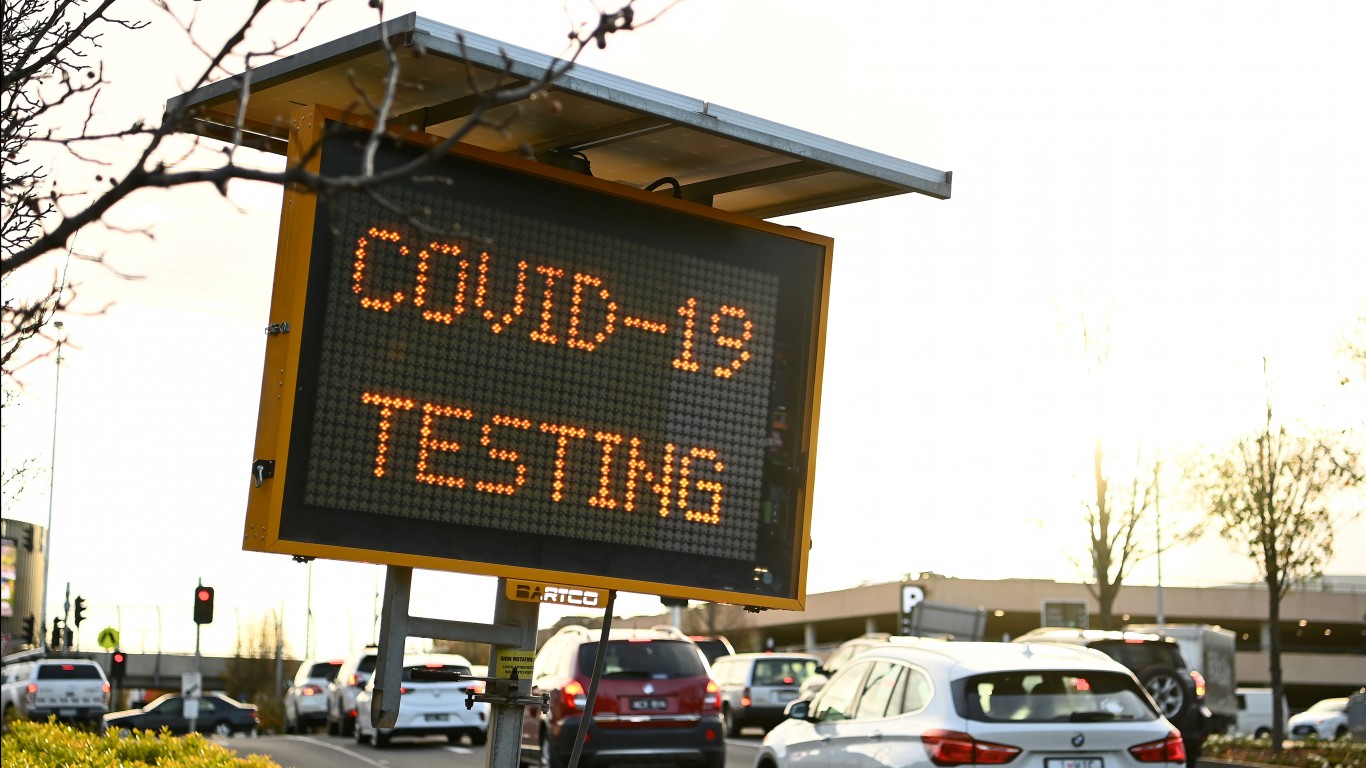
COVID-19 variants have spread to all 50 states, according to data just reported by the Centers for Disease Control and Prevention (CDC). These variants are labeled B.1.1.7, B.1.351, and P.1. (Other variants have emerged as well, although the CDC does not report on them directly.)
The B.1.1.7 variant spreads more aggressively than the others and now makes up a large percentage of the new cases in many places. Reported cases of this variant total 4,686 across all 50 states, according to the CDC. There are also 142 reported cases of the B.1.351 variant across 25 states and 27 reported cases of the P.1 variant across 12 states — though the actual numbers are higher, since CDC data lags behind the counts made by many state and local public officials. (Overall, these are the states with the highest number of COVD-19 cases.)
The situation isn’t helped by the fact that in some places, particularly those states that have reopened, some people have stopped wearing masks and practicing social distancing. Fortunately, as variants become a larger part of the spread of COVID-19, vaccination rates have picked up. These are the states doing the best in the race to roll out vaccines.
Even as the rate at which the disease spreads slackens, America remains the nation with the worst counts in both confirmed cases and fatalities. The United States has had 29,846,814 confirmed cases of COVID-19 to date, which is about a quarter of the world’s total. Fatal cases in America number 543,481, about a fifth of all those suffered internationally. New daily cases continue to hover around 50,000, which public health officials say remains dangerously high, despite being down sharply from two months ago.
The CDC and the World Health Organization (WHO) have recently issued new important global warnings about variants.
Click here to see new warnings about variants according to CDC and WHO

Discovering other variants
Public health officials and epidemiologists admit that the list of variants the CDC tracks is limited. Among other worrisome new strains are a California variant dubbed a “variant of concern” (see below) and another one, discovered in New York, referred to as the “escape variant” for its apparent ability to elude immune responses.
[in-text-ad]
Judging how to treat variants
According to Medscape Medical News, the CDC and WHO “have established new criteria to classify variants of SARS-CoV-2, the virus that causes COVID-19.” The new classifications for variants fall into three categories, based on a set of 15 variants recently analyzed.

Variant of interest
This variant is defined, according to Medscape, by the presence of “gene changes that suggest it might be more contagious or that may help it to escape immunity conferred by natural infection or vaccination. Therapeutics and tests may not work as well against it.”

Variant of concern
Medscape describes this variant as potentially more dangerous, and notes that it may spread faster than other variants. “It may also reduce the effectiveness of therapeutics and vaccines,” notes the website. “People who have previously had COVID-19 may become reinfected by the new strain.”
[in-text-ad-2]

Variant of high consequence
A variant with this classification could be very severe in terms of infection rate and the severity of symptoms. It may also trigger higher levels of hospitalization. Medscape writes: “It has also been shown to defeat medical countermeasures, such as vaccines, antiviral drugs, and monoclonal antibodies.”

Variants and the future
One of the largest challenges of COVID-19 containment going forward appears to be that there is no way to forecast when a new variant will arise and what its characteristics might be. There are new strains of the flu each year, and even in the case of that common disease, accurate predictions are impossible
Get Ready To Retire (Sponsored)
Start by taking a quick retirement quiz from SmartAsset that will match you with up to 3 financial advisors that serve your area and beyond in 5 minutes, or less.
Each advisor has been vetted by SmartAsset and is held to a fiduciary standard to act in your best interests.
Here’s how it works:
1. Answer SmartAsset advisor match quiz
2. Review your pre-screened matches at your leisure. Check out the advisors’ profiles.
3. Speak with advisors at no cost to you. Have an introductory call on the phone or introduction in person and choose whom to work with in the future
Thank you for reading! Have some feedback for us?
Contact the 24/7 Wall St. editorial team.

 24/7 Wall St.
24/7 Wall St.
